Quietly tucked away in the northwestern corner of the country, the autonomous region of Galicia offers a remarkable blend of history, culture, and gastronomy for the curious wanderer.
By PRACHI JOSHI
IT IS AN UNSEASONABLY WARM SEPTEMBER day with clear blue skies as I make my way along the sun-dappled road, winding its route through the mountains. Everywhere I look, I see 50 shades of green. Deep below in the canyon, the Sil River flows gently, azure and glistening in all its glory. Vineyards dot the steep slopes, and I pass a couple of small wineries with crates of freshly harvested grapes sitting by the roadside. I’m in Galicia, a rugged land of verdant valleys and ancient heritage that is quite distinct from the rest of Spain. Touristy Barcelona, busy Madrid, and party-happy Ibiza seem a world away; everything is quieter and more laid-back in this remote region—the Galicians even speak a slightly different language, Galego. And with each step, I feel excited to experience the difference!
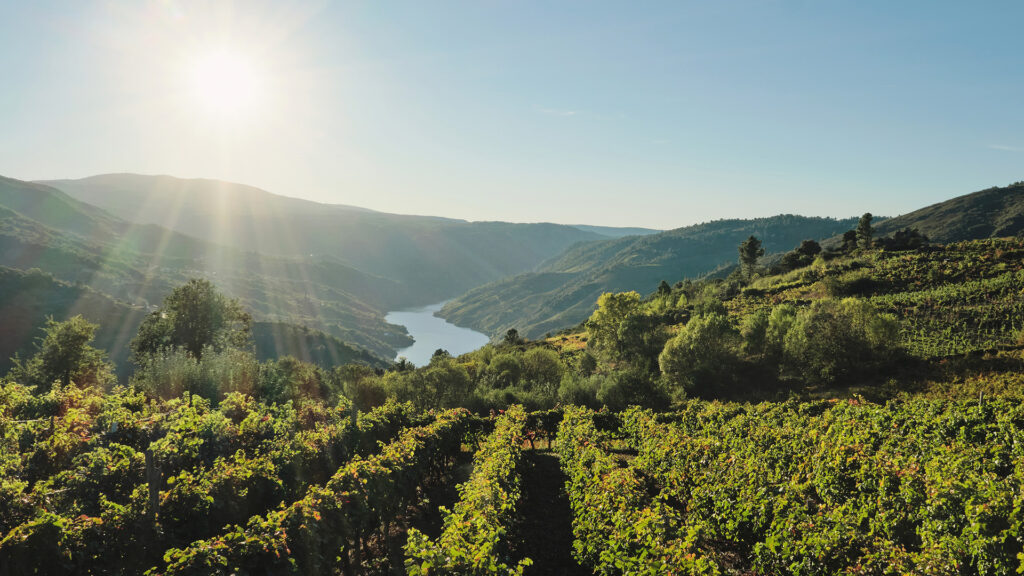
the gently winding waters of the Sil River.
Pilgrim’s Progress
A few days ago, I had boarded a train at Madrid’s Chamartin Railway Station to reach Galicia’s capital, Santiago de Compostela. Its Old Town and eponymous cathedral are together designated as a UNESCO World Heritage Site. This is the end point of the famed Camiño de Santiago (the Way of Saint James), a network of pilgrim ways for people of the Catholic faith across Europe. The cathedral houses a tomb believed to hold the remains of the apostle. I first catch sight of its Baroque spires towering over the city from the Alameda Park across town. As I head towards the church, along meandering streets lined with boutiques, cafés, and restaurants, I pass several pilgrims: all in a state of pious bliss. Ten minutes later, I reach my destination—the Praza do Obradoiro square and I gaze up in speechless wonder at the majestic cathedral.
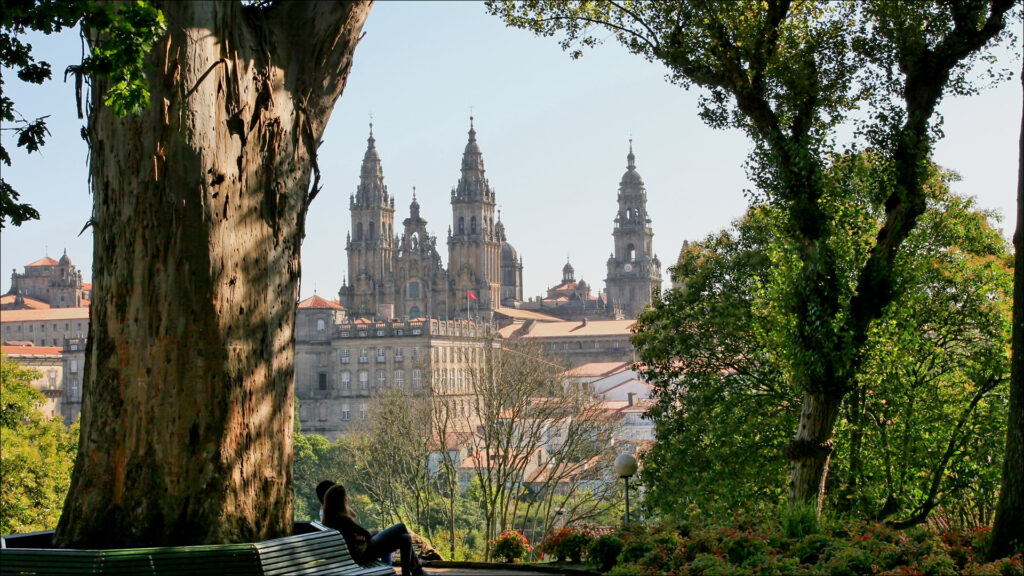
A chapel has existed here since the 9th century, but the Romanesque structure of the present-day cathedral dates to the 11th century, with Gothic and Baroque touches added later. Inside, the soaring barrel-vaulted nave is home to a splendid golden altar, under which lies the crypt with relics of Saint James and two of his disciples. The Pórtico de la Gloria, a 12th-century doorway featuring 200 extremely detailed biblical figures, holds me rapt for some time. The sun is just about to set and so, I climb to the cathedral’s rooftop for a bird’s eye view of the Old Town. The vista of red rooftops bathed in golden light creates a mesmerising lasting impression on my mind.
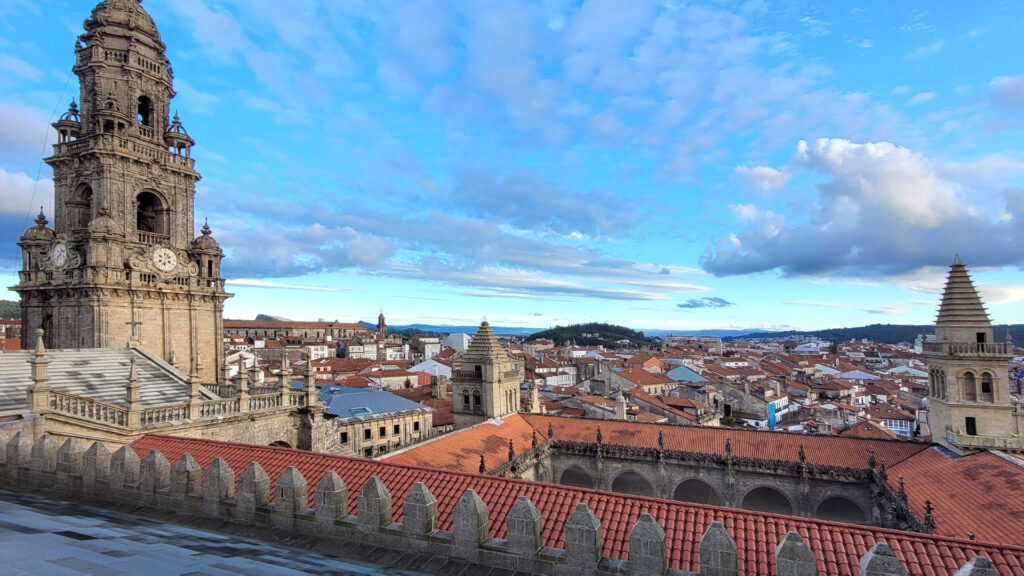
Regal Residences
The next morning, I have a hearty breakfast at my hotel, Virxe da Cerca, a cosy pousada (inn) set in a historic 18th-century building. A 40-minute drive south of the city takes me to Pazo de Rubianes in Vilagarcía de Arousa. Pazo can be translated to ‘palace’ or ‘stately manor house’—one that’s usually accompanied by a vineyard, garden, or even sprawling woodlands. Originally built in the 15th century, it was rebuilt in the 18th century in the French Chateau style. While the house is closed, its historical garden with more than 4,000 camellia trees is open for tours—the perfect time to see them in full bloom is from late February to early March, if you can manage it. The pazo is located in Rías Baixas, one of the five Denominación de Origen (DO) wine regions of Galicia. Here, the Albariño grape reigns supreme, growing on parras (granite pergolas). The warm rays of the sun fall lightly on my face as I explore the picturesque vineyards, absorbing the freshness of the air and the fragrance of the land’s bounty. I soon get a taste of the latter as I step into their cellar for a glass of their flagship 1411, a deliciously crisp white wine with hints of salinity and notes of green apple and pear.
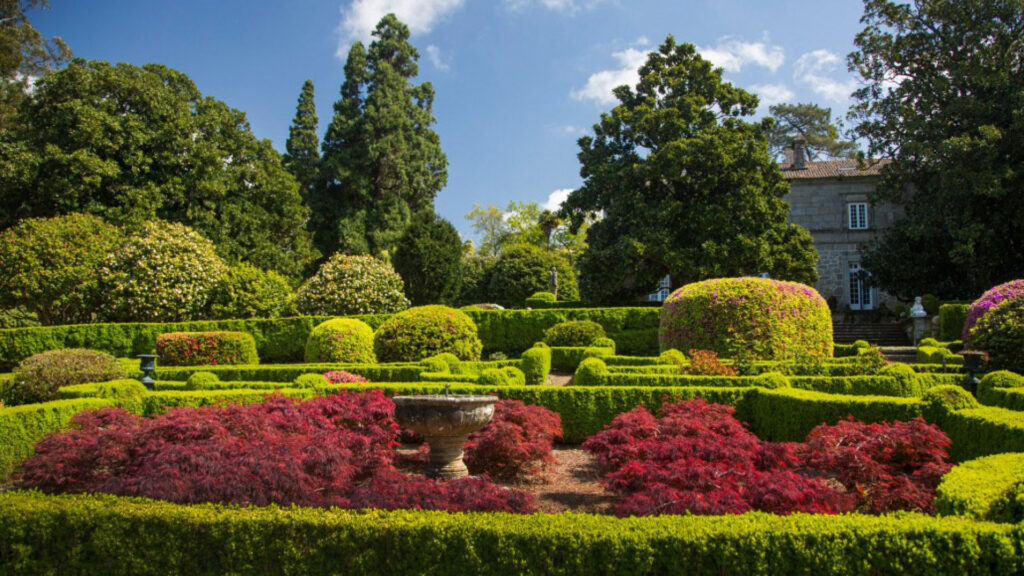
offer a delightfully serene ambience.
The lip-smacking refreshment fuels my spirit, and I resume my journey, heading 15 minutes southwest to the town of Cambados, home to the Pazo de Fefiñáns. The L-shaped, Renaissance-style, 16th-century manor retains all its period furnishing. In one of the rooms, I’m gobsmacked to see L’Hindoustan, a large-scale tapestry depicting the Ganges, temples, and of course, an elephant! Apart from a winery, the pazo also has its own distillery and I end my visit by trying orujo, a potent spirit with a sweet-sour taste. Often flavoured with herbs or coffee beans, it’s also used to make the traditional Galician drink queimada (a kind of hot punch). I go on and toast to life’s luxuries with every sip.
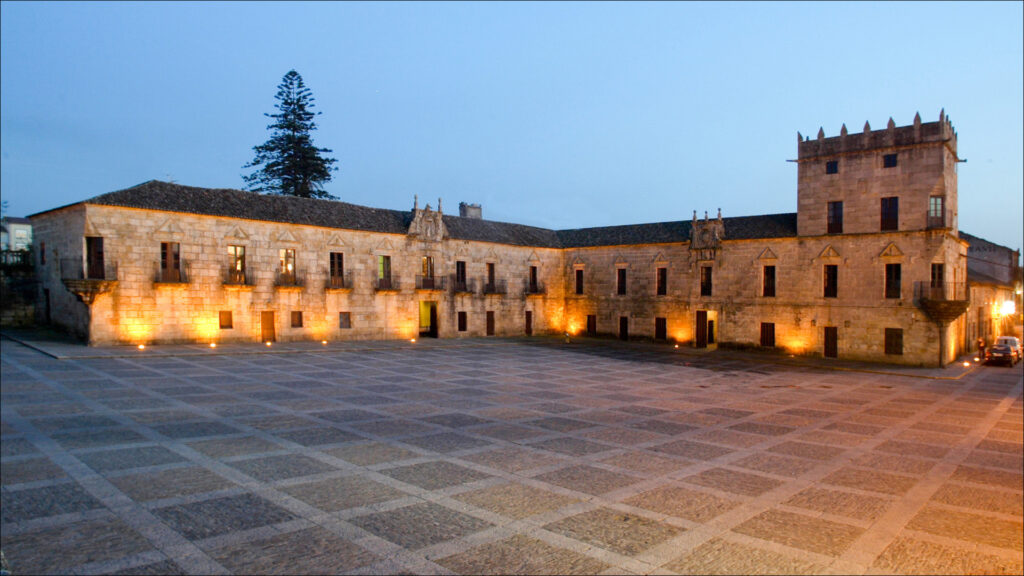
Monastic Living
That’s not to say that the other end of the spectrum is missing from the mise en scène. Given its remote location, Galicia was favoured by monks seeking isolation. And so, monasteries and abbeys abound here. The oldest among them is the 6th-century, rock-cut San Pedro de Rocas monastery, now in ruins, with a still-standing belfry that I find faintly haunting. However, if you can visit only one monastery in Galicia, I highly recommend Santa María de Oseira. This 12th-century Romanesque structure boasts numerous restored frescoes and a medieval-era apothecary. What I find most fascinating is the ‘palm tree room’ whose dome is supported by exquisitely carved columns that resemble swaying palms.
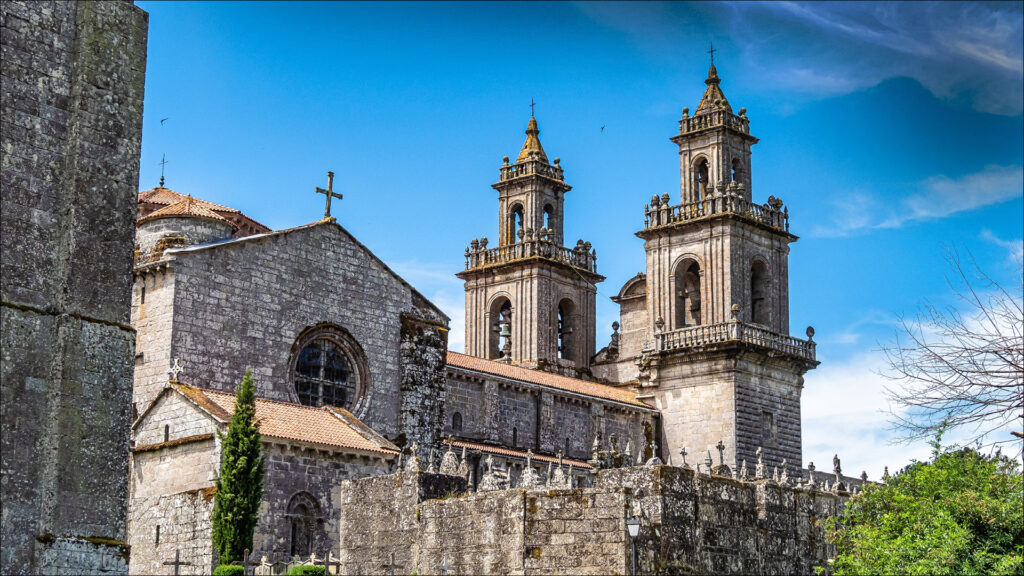
Santa María de Oseira monastery.
In Vino Veritas
From here, I drive about two hours southeast to Ribeira Sacra, another DO wine region. Once here, I make my way to the Regina Viarum winery, and get a glimpse of the hard work in progress—hand-picking the grapes on 45-degree slopes and then transporting them back up—but it’s a labour of love resulting in fruity red wines. I spend the afternoon sipping the drink on an all-glass balcony—the sweeping views of the vineyards and the river are an added bonus.
Gourmet Paradise
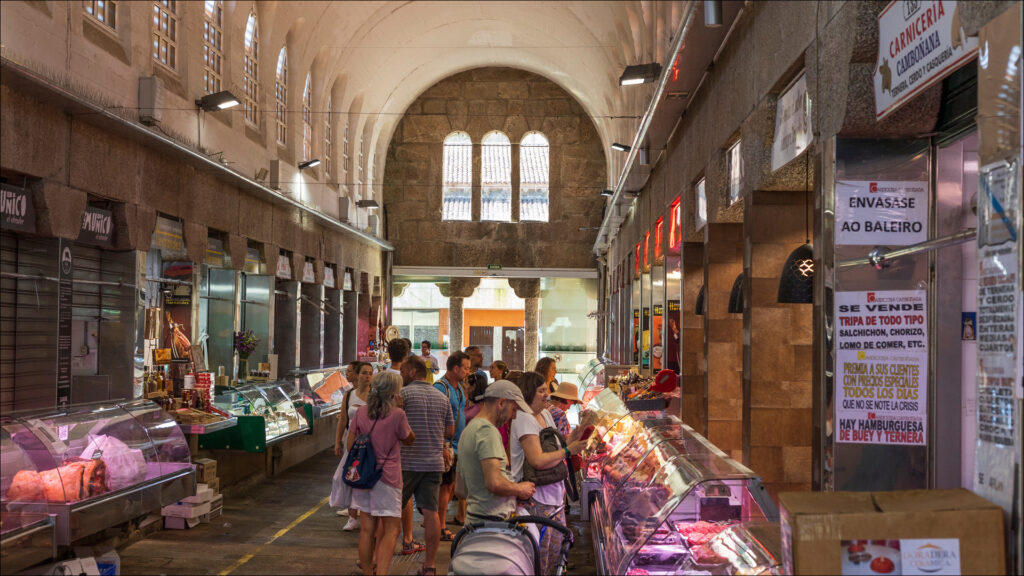
When the locals offer you wine at every turn, it sure does make you ravenous! Luckily for me, Galicia’s long Atlantic coastline offers a bounty of seafood. I get a first-hand look at its sheer variety on a morning stroll through Mercado de Abastos (food market) in Santiago de Compostela—from mussels, clams, and scallops to cod, hake, squid, and much more. At A Noiesa restaurant, I eat empanadas stuffed with hake and cockles, while copious quantities of shellfish adorn the arroz con mariscos (rice with seafood). The latter is like paella, but with some stock retained in the casserole; as you eat, the liquid gets absorbed into the rice, imparting a deep flavour. Another must-try dish is pulpo a la Gallega or Galician-style octopus. At Restaurante Casa Gazpara in the town of O Carballiño (an hour’s drive from the capital), I try it the traditional way—the octopus is slowly cooked in boiling water, sliced, and served drizzled with olive oil and a dash of salt and sweet paprika.
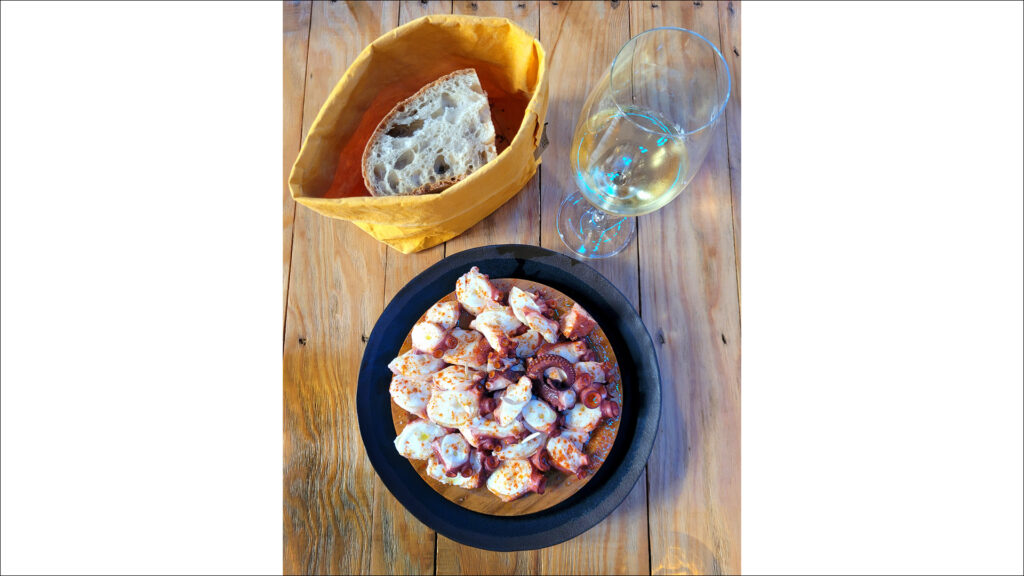
My favourite gourmet experience, though, is in O Grove, a coastal town where the Rías Baixas estuary meets the Atlantic Ocean. I hop on a catamaran to see shellfish farms up close and then feast on a large seafood platter on board. The perfect way to end a Galician meal is with a slice of tarta de Santiago, an almond flour cake dusted with powdered sugar that’s used to fashion a Saint James cross on top!
Back in Santiago de Compostela, as I browse for souvenirs, my guide recommends azabache. This is Jurassic-era fossilised wood that shines like a gemstone when polished. I pick a scallop shell-shaped pendant, a metaphor in my mind for Galicia—a combination of faith, nature, and some of the best seafood I have ever eaten.
Related: Explore The Wilderness Of Kaziranga National Park Along The Mighty Brahmaputra River




